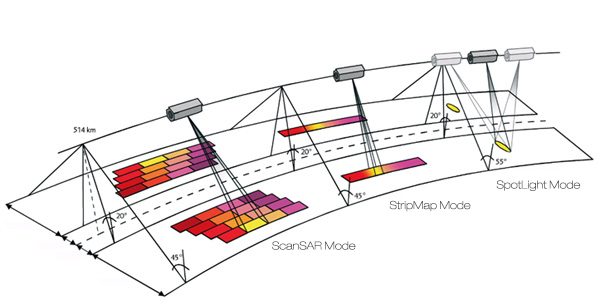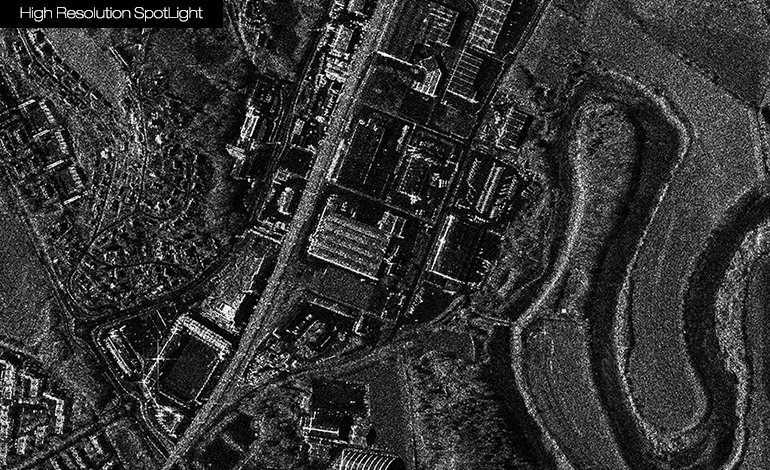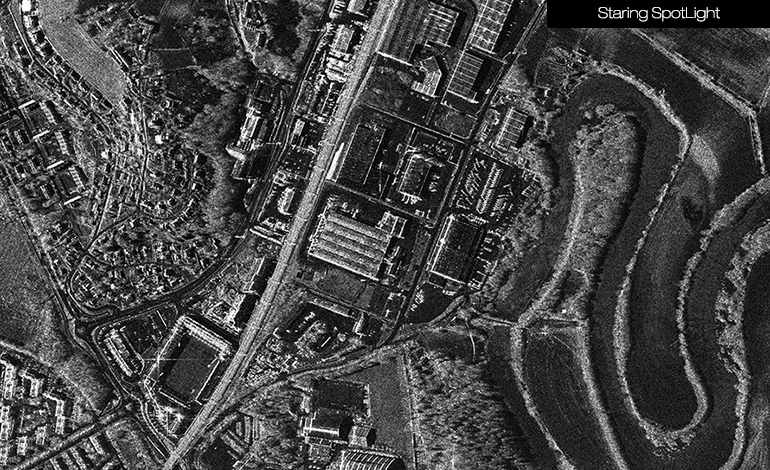Flying in Close Formation
The TanDEM-X operational scenario requires the coordinated operation of two satellites flying in close formation. Super resolution require selectable along-track baselines in the range from hundred meters up to several kilometers. Interferometric data acquisition can be achieved with the TanDEM-X satellite formation. This formation combines an out-of-plane ( horizontal ) orbital displacement by different ascending nodes with a radial ( vertical ) separation by different eccentricity vectors resulting in a helix like relative movement of the satellites along the orbit.
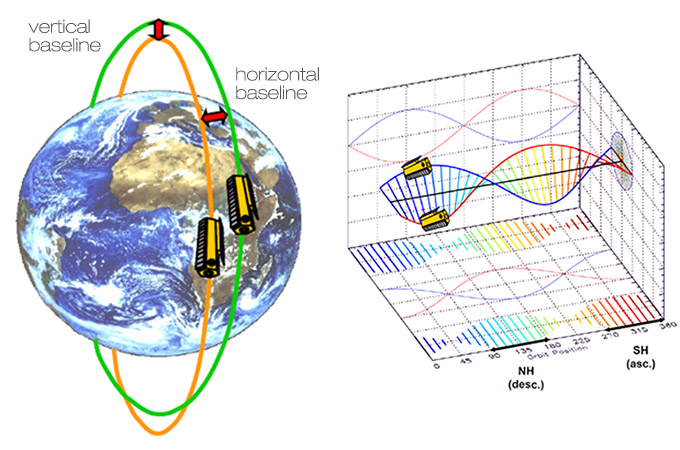
Interferometric SAR Observational Modes
Interferometric data acquisition with the TanDEM-X satellite formation can be achieved in three operational modes: Pursuit monostatic mode, bistatic mode and alternating bistatic mode. (a) Pursuit monostatic mode: Both SAR are operated independently for synchronization needs, SAR instruments look acquire data from the same swath with a short time difference of a few seconds corresponding to an along-track distance of 30-50 km,the temporal decorrelation is small for most terrain types with the exception of ocean surfaces and vegetation in the case of moderate to high wind speeds. (b) Bistatic mode: Where the SAR instruments of both spacecraft look into a common footprint thus providing different views of the observed target area.This enables the acquisition of highly accurate single-pass cross-track and/or along-track interferograms without the inherent accuracy limitations imposed by repeat-pass interferometry due to temporal decorrelation and atmospheric disturbances. (C) Alternating bistatic mode: It is similar to bistatic mode, but the transmitter is switched from pulse to pulse between the two satellites.It can be used for phase synchronization, system calibration, and to acquire interferograms with two different phase to height sensitivities; the simultaneously acquired monostatic interferogram has a higher susceptibility to ambiguities especially at high incident angles.
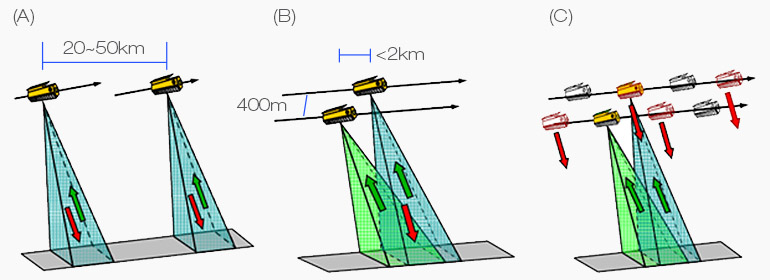
Specification

Repeat cycle
11 days
Center frequency
9.65 GHz / X band
Wavelength
3.1 cm
Look direction
L & R
Incidence angle
20 to 60°
Imaging mode
7 types
Resolution
0.25 to 40 m
Polarization
Single / Dual
Programming Services
| Programming Level | Description |
| Standard | Order confirmation up to 3 days before submission deadline |
| Fast | Order confirmation sent between 3 and 1 day before submission deadline |
| Urgent | Order confirmation sent less than 1 day before submission deadline |
| * Submission deadlines are 08:30 UTC and 21:30 UTC or as indicated in the financial quotation | |
Modification and Cancellation Policy
| Modification and Cancellation Notice |
| Before 24 h prior to submission deadline |
| Within 24 h prior to submission deadline |
|
* Modification and cancellation notice must be submitted in written format via e-mail or fax ** Submission deadlines are 08:30 UTC and 21:30 UTC |
Processing Services
| Processing Level | Description |
| Regular: Science Orbit | Within 7 day |
| Regular: Rapid Orbit | Within 1 day |
| NRT: Predicted Orbit | Under 7 hours |
| * From time of acquisition to data made available on a pick-up point | |
Unprecedented Resolution Up to 25 cm
The new TerraSAR-X Staring SpotLight mode ( High Resolution SpotLight ) takes SAR-based object detection and recognition for Image Intelligence ( IMINT ) and GEOINT applications to a new level. An unprecedented resolution of down to 0.25 metres and enhanced radiometric quality reveal the crucial details. High Resolution SpotLight mode is made for professionals who require highly detailed and reliable all-weather information for dependable decision making.
